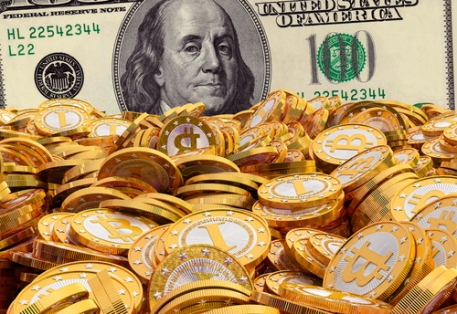The Fed On Bitcoin: Much Ado About Nothing

After a spectacular closeout to 2017 – with new price records being broken nearly as soon as they could be set – the early days of 2018 have proven to be much more difficult.
Gravity has come to call on bitcoin after seemingly forgetting its existence for a brief period. The story has included the digital currency’s price plunging over the last month, as well as a wave of regulators – from Seoul to Singapore to Beijing to Berlin – who have suddenly realized that perhaps cryptocurrency in general needs a long, hard look.
And, as of today, it looks like the Federal Reserve has another rock to add to crypto’s sack – or actually two rocks, since two different branches are weighing in. But their messages are remarkably similar: Digital currency is an interesting idea, and an ingenious use of technology. It is not, however, a currency – or really at any risk of ever becoming one.
And the fears that it will disrupt and displace fiat currency? According to New York Fed economists Michael Lee and Antoine Martin, as well as Minneapolis Fed President Neel Kashkari, those fears are probably a bit overstated.
“If you live in any modern advanced economy, I would stick with the dollar, I would stick with the yen and leave bitcoin for the, you know, toy collectors,” Kashkari said during a town hall meeting in Pierre, South Dakota.
Oof.
So why is the Fed rolling its eyes, while the rest of the world seems to be getting ready to panic?
Not Much of a Competitor
Bitcoin has been around for a while, Lee and Martin pointed out in their recently released blog post on digital currency – and so far, no good when it comes to competing as a currency.
Bitcoin and the like do all-right in an environment where there is low or no trust, they noted – say, Greece in 2015, when the debt crisis was so severe it seemed possible the nation would leave the euro zone. Trading, they noted, jumped notably during that window.
“Cryptocurrencies arguably solve the problem of making payments in a trustless environment,” they noted in their post.
But, they then countered, trustless environments are actually rare in developed economies.
“It is not obvious that this is a problem that needs solving, at least in the United States and other advanced economies,” the post said.
In fact, modern developed economies are totally developed around trust – which makes those commerce environments convenient and pleasant to access.
Bitcoin and other crypto, on the other hand, has issues. Its price is highly volatile, because people invest/speculate in it. That means it just fundamentally can’t fulfill one of the main functions of currency, which is to act as a store of value. Bitcoin has seen its value tumble as much as 70 percent from a record peak near $20,000 in mid-December.
“In a world where all things were priced in bitcoin, this would likely translate into massive swings in inflation and economic activity,” they said.
Apparently, according to economic experts, a currency that features value swings of +/- $10,000 per unit in a month’s time would be hard to spend. Shocking.
Lee and Martin also noted that bitcoin mining requires a ton of power – and a shockingly large amount of time to process transactions. Crypto transactions are estimated to use 48 terawatt hours of energy a year, an amount that could power 4.4 million U.S. homes, according to Digiconomist.
Speed is also a big issue. The bitcoin network is restricted to a sustained rate of processing seven transactions per second, due to the bitcoin protocol restricting block sizes to 1MB. Bitcoin cash, with its 8 MB block size, vastly speeds things up to 61 transactions per second. VisaNet, by comparison, can handle 56,000 transactions per second at peak capacity.
Saying it’s not even close kind of buries the lead, Lee and Martin noted.
“Fundamentally, we wonder whether a payment method designed to function where trust in institutions is completely absent can ever be as convenient as one where trust is required, but also already exists.”
The president of the Minneapolis Fed, on the other hand, doesn’t wonder at all. He’s pretty certain it can’t be.
Money for Toy Collectors
Bitcoin isn’t a currency, Kashkari noted – at best, it’s a novelty, he told a town hall meeting recently.
“The idea that these virtual currencies are ever going to compete with the dollar is hard to fathom,” he said.
The problem is that though bitcoin is “scarce like gold,” that scarcity is an illusion, because anyone can use the blockchain to build their own currency.
“The problem is the barrier for entry for anybody creating another version of bitcoin is zero.”
The barriers for using bitcoin, he noted, are quite steep. It is not commonly used as currency because most merchants don’t accept it. It would be impossible to know if one ever got a “good price” on anything, since bitcoin’s value changes so often. And it would be slower – most traditional payment methods, including cash, are just easier and more effective to use.
So, what did we learn this week?
Well, in fairness, we didn’t learn much of anything, since we’ve been noting that bitcoin is much ado about nothing for some time now.
“No one believes in the merits of a global cryptocurrency, except bitcoin zealots,” Karen Webster wrote in October of the great crypto explosion. “The notion that central banks will give up monetary control of their fiat currencies for a global cryptocurrency, especially bitcoin, is just not happening.”